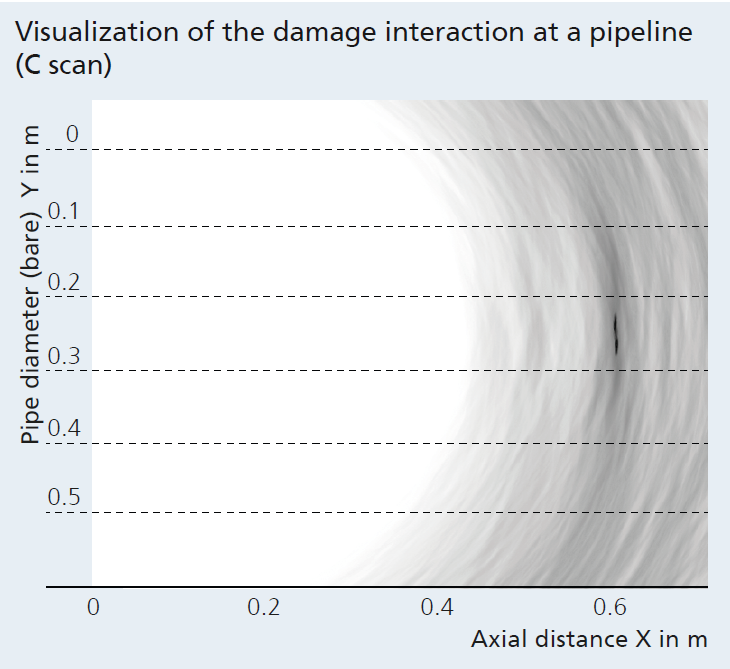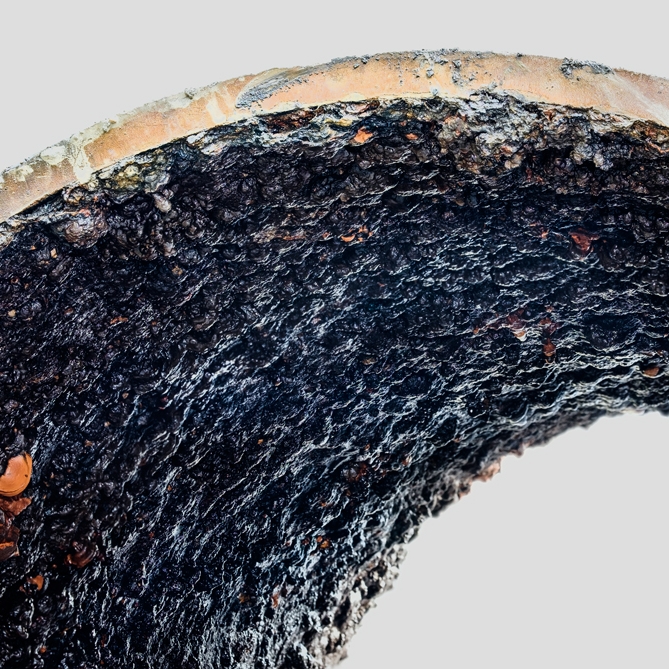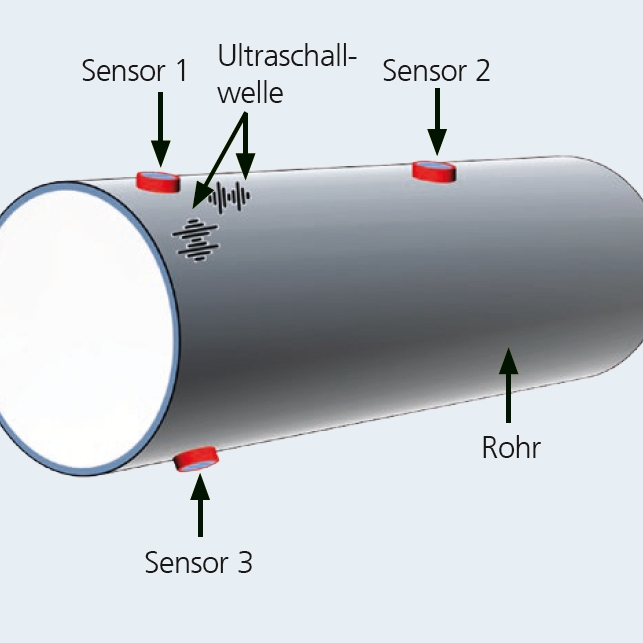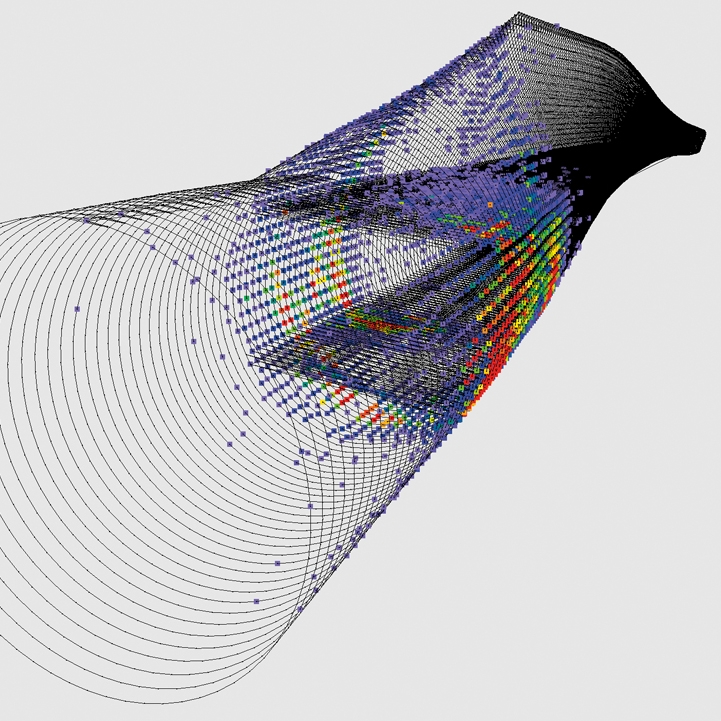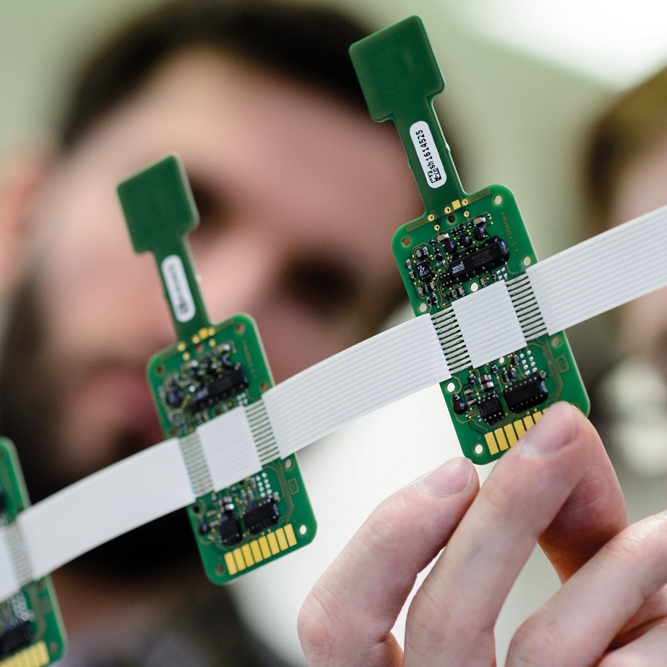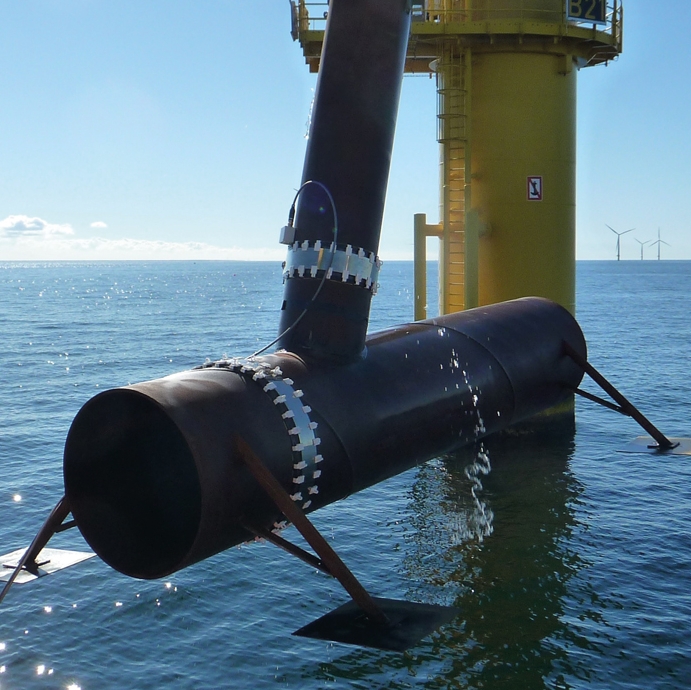
Energy sector

Safety and reliability are essential for large-scale plants. Monitoring of critical components, such as rotor blades or pipes, helps to prevent downtime and reduce maintenance costs. Fraunhofer IKTS offers various systems for the condition monitoring of onshore and offshore plants. Furthermore, IKTS is available as a service provider for supporting fatigue tests and for instrumentation, operation and the evaluation of measuring results.
Monitoring of tanks
With CoMoDetect®, Fraunhofer IKTS offers a system solution for the condition monitoring of storage tanks in safety-relevant industrial areas, which determines the structural integrity by analyzing specific ultrasonic waves. The monitoring system uses active signature analysis as well as passive acoustic emission analysis.
CoMoDetect® was developed specifically for the permanent monitoring of hard-to-access vessels and other corrosionprone components in explosion-proof environments. The system consists of a network of sensors (CoMoSens® Ex) and an electronic data logger (CoMoBase® Ex). The distances between the sensors define the area to be monitored. To obtain a good crack depth detection, the spatial resolution is about a fourth of the vessel’s wall thickness. In order to increase the spatial resolution in critical areas, multiple sensors can be coupled to obtain clusters.
The sensors are mounted to the vessel with well-established welding methods, which makes installation fast and easy. Sensors, which are certified for different temperature ranges, are thus mounted permanently to the vessel. This enables continuous measuring over longer time periods. The monitoring system can be extended at any time.
Services offered
- Vessel monitoring in industrial plants
- Crack detection and corrosion monitoring for chemical plants, refineries, etc.
Monitoring of pipes
Corrosion, deposits, biofilm, fouling or other foreign materials affect the integrity of pipelines and may even lead to complete destruction. For this reason, operators of very long pipeline networks in particular strive to implement maintenance and service operations as efficient as possible.
With CoMoRanger®, Fraunhofer IKTS offers a monitoring system specifically for corrosion-prone components that are difficult to access. It is used in particular where conventional test pigs fail. The system detects defects and continuously determines the residual wall thickness in the case of extensive corrosion at above-ground, underground or vertical pipes.
For this purpose, CoMoRanger® sends low-frequency ultrasonic waves, called guided waves, into the components to check their condition. Since guided ultrasonic waves travel nearly undampened across wide distances in pipes, extensive structures can be examined from one single location. This reduces the effort for testing, with regard to both the mere measuring time and the requirements regarding the reliability of the component.
The monitoring system by Fraunhofer IKTS is easy to install. The sensors are pressed onto the pipe to be tested using a steel belt; they remain permanently mounted to the test object.
CoMoRanger® reduces the effort for recurring routine inspections and predictive maintenance. It also helps to avoid unnecessary digging and the removal of coating or scaffolding in case of defect-free pipes. This leads to savings in operating costs.
Services offered
- CoMoRanger® (number of sensors as required)
- Electronic data logger
- System design as per requirement (e.g. as an autonomous measuring system with flash memory storage)
Rotor blade monitoring
Wind turbines are among the world’s most important technologies for sustainable energy supply and have become an indispensable part of the renewable energy mix. Climate objectives are not just about increasing the installed capacity, e.g. through more wind farms. Improving operating efficiency is just as important. This includes undisturbed operation as well as lower maintenance costs.
Damage to the rotor blade, e.g. from lightning strike, bird impact or aerodynamic imbalance, results in enormous costs. In most cases on-site repair is the most economical option, when information on location, extent and type of damage is available. With this in mind, Fraunhofer IKTS has developed a system for the monitoring of rotor blades, ready for integration and realized with optical energy and data transmission. The latter feature is necessary as no metal conductors are allowed in the rotor blade for lightning protection reasons.
The system uses the passive method of acoustic emission testing to detect defects in the rotor blade structure. This method analyzes special ultrasonic waves which occur when the structure is under stress. Those waves are detected by piezoelectric sensors. The accumulation and distribution of the located acoustic emission events represent the current damage situation.
An analysis of the sensor data allows to localize the damage accurately. This simplifies repair operations. In the best-case scenario, it prevents the replacement of the whole rotor blade.
Fraunhofer IKTS thus offers a monitoring system that enables the evaluation of the component condition until the next scheduled inspection and helps to optimize service operations.
Depending on the company’s insurance, the use of the system may even slow down the loss of value of certain components of a wind turbine, contributing to its value retention.
Services offered
- During rotor blade development: support of static and dynamic testing using the most advanced measuring technology with subsequent evaluation of the data
- In operation: monitoring of known and repaired defect locations by a subsequent installation of the system
Offshore foundation structures
The rise of renewable energy technologies also means that the number of offshore wind turbines is growing worldwide. Offshore locations are usually characterized by much higher wind speeds than inland locations. On the one hand, this makes for much higher yields. On the other hand, offshore wind farms have to withstand much higher loads than their counterparts on land.
At the same time, maintenance operations are made much more difficult by the rough weather conditions on the high seas. This significantly increases operating and maintenance costs.
The difficult conditions on the high seas severely limit the options for damage detection with conventional testing methods. The enormous forces caused by the wind turbine’s own weight, by water currents and waves in connection with the dynamic loads from the operation on the foundation structure may lead to damages, such as cracks in weld seams. Fraunhofer IKTS has developed CoMoBelt® – a sensor ring specifically for the detection of such damages in offshore environments. The sensors are distributed as a ring around the loaded spots and adapted to the specific requirements. A number of barrier layers protect the sensors and other electronic parts by permanently preventing seawater penetration.
Fresnel volume migration provides data analysis for imaging. Environmental data, such as temperature or air humidity, are additionally taken into account for the analysis. This correction is necessary because external factors also affect the measuring signals.
Services offered
- Monitoring of offshore foundation structures, e.g. for jacket or tripod foundations
- Crack detection at weld seams in onshore and offshore wind farms


